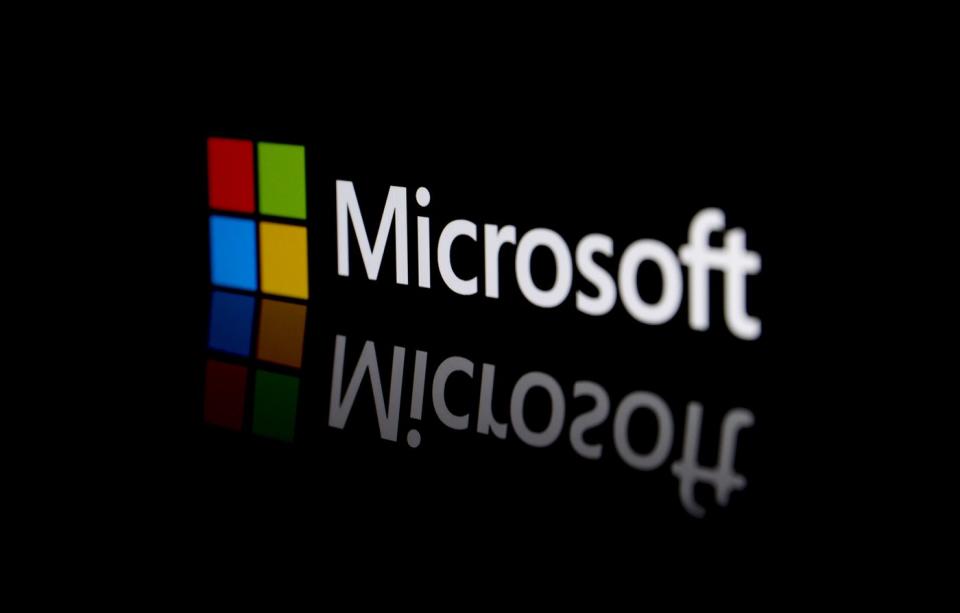Finance
This will be one of the world’s first artificial intelligence (AI) stocks to be valued at $5 trillion
Microsoft (NASDAQ: MSFT) was founded in 1975 and some of its earliest software products, such as Windows and Word, are still used by more than 1 billion people. But the company has since expanded into other businesses such as gaming, web search, cloud computing and now artificial intelligence (AI).
AI is an important new focus for Microsoft. The company is rapidly building new data centers to meet the demand for computing power from AI developers, and has already launched AI software products such as the virtual assistant Copilot, which could be a major source of revenue in the coming years.
According to AI industry insiders and technology experts, these initiatives could fuel explosive growth for Microsoft in the coming years. As a result, I predict it will be one of the first AI companies in the world to surpass its $5 trillion valuation, which represents a 70% increase from its current market cap of $2.94 trillion. This is why.


Microsoft takes a multifaceted approach to AI
Last year, Microsoft agreed to invest another $10 billion in the maker of ChatGPT OpenAI, and it used the startup’s leading AI models – in combination with its own models – to develop Copilot. The virtual assistant is now integrated into most of Microsoft’s flagship software products, including the Windows operating system, the Bing search engine, the Edge Internet browser, and the 365 suite of productivity applications.
Copilot for 365 allows the user to create content directly in Word, whether it’s an article or a business proposal, and the virtual assistant can even use previous content pieces as a guide for formatting purposes. Then, that Word document can be turned into a PowerPoint presentation with a single prompt. It is the ultimate productivity tool and that is why organizations are signing up en masse.
During the fourth quarter of fiscal 2024 (ending June 30), Microsoft saw a 60% increase in Copilot for 365 customers compared to just three months earlier. The number of companies that purchased at least 10,000 Copilot seats for their employees more than doubled, including giants like Walt Disney And Novartis. Consulting firm EY uses Copilot for no fewer than 150,000 employees.
Copilot costs an additional $30 per seat, per month, on top of the cost of a 365 subscription (although this is likely to be discounted for large enterprises), so Microsoft has the opportunity to generate a significant amount of new revenue from its existing customers.
However, one of Microsoft’s biggest AI capabilities lies in the cloud, primarily through the Azure platform. Microsoft builds data centers equipped with the latest chips from suppliers and others Nvidia And Advanced micro devices, and it distributes that computing capacity to companies via Azure, which they use to develop AI applications. Additionally, companies can access pre-built AI models on Azure to accelerate their progress, including those from OpenAI.
Azure AI had more than 60,000 customers at the end of the fourth quarter, up 60% from the same period a year ago.
AI is already contributing to Microsoft’s revenue
Microsoft generated total revenue of $64.7 billion in the fourth quarter, which represented 15% year-over-year growth. Beneath the surface, the intelligent cloud segment accounted for $28.4 billion of that revenue, which was an increase of almost 19%. Looking even deeper, revenue attributed to Azure increased 29% – and 8 percentage points of that growth came from AI.
Microsoft CFO Amy Hood said demand exceeded capacity this quarter, meaning Azure revenue could have grown even faster if the company had more AI data centers online. That’s why the company spent a whopping $19 billion on capital expenditures in the fourth quarter alone, almost all of which went toward building AI data center infrastructure and purchasing servers and chips.
Microsoft believes it will make money from those investments over the next fifteen years, so it clearly sees AI as a long-term opportunity.
Outside of Azure, 365 commercial revenue grew 13% year over year in the fourth quarter, and Microsoft said Copilot drove an increase in average revenue per user as adoption grew across the enterprise. CEO Satya Nadella said Copilot is growing faster than any generation of software the company has launched within 365 to date. This momentum is expected to continue into 2025.
Microsoft’s path to a $5 trillion valuation
According to Nvidia CEO Jensen Huang, data center operators can generate $5 in revenue for every dollar they spend on chips by renting the computing power and offering AI services in the cloud (for four years). Cathie Wood, CEO of Ark Investment Management, believes AI software will generate $8 in revenue for every $1 invested in chips.
If these predictions hold true, Microsoft could generate more than $100 billion in additional long-term revenue from its $19 billion in investments in the fourth quarter — and the company plans to spend even more in coming quarters. That kind of payout alone will almost certainly catapult Microsoft to a $5 trillion valuation.
But let’s look at the numbers in the here and now. Microsoft generated earnings per share of $11.80 in fiscal 2024, up 22% from fiscal 2023. Based on the current share price of approximately $417, Microsoft trades at a price-to-earnings (P/E) ratio of 35 ,3. If the company continues to grow its revenues at 22% per year and maintains its current price-to-earnings ratio, it will surpass a $5 trillion valuation within the next two and a half years!
That said, 22% is a fast growth rate for a company of this size, and Wall Street is only predicting 11.3% earnings growth in fiscal 2025, followed by 16.3% growth in fiscal 2026. Even with 11 .3%, Microsoft will still achieve the profit growth of 11.3%. a valuation of $5 trillion within five years (assuming a constant price-to-earnings ratio).
However, I would be willing to bet on a moderately higher growth rate over the next few years as Microsoft could fill a tsunami of pent-up demand as it gradually completes new data centers.
Nvidia even Apple are currently valued similarly to Microsoft, and they also have a path to the $5 trillion milestone within a few years. But even if Microsoft doesn’t get there first, I don’t think it will be far behind any company.
Should You Invest $1,000 in Microsoft Now?
Before you buy shares in Microsoft, consider the following:
The Motley Fool stock advisor The analyst team has just identified what they think is the 10 best stocks for investors to buy now… and Microsoft wasn’t one of them. The ten stocks that survived the cut could deliver monster returns in the coming years.
Think about when Nvidia created this list on April 15, 2005… if you had $1,000 invested at the time of our recommendation, you would have $615,516!*
Stock Advisor provides investors with an easy-to-follow blueprint for success, including portfolio building guidance, regular analyst updates and two new stock picks per month. The Stock Advisor is on duty more than quadrupled the return of the S&P 500 since 2002*.
*Stock Advisor returns August 6, 2024
Anthony Di Pizio has no position in any of the stocks mentioned. The Motley Fool holds positions in and recommends Advanced Micro Devices, Apple, Microsoft, Nvidia, and Walt Disney. The Motley Fool recommends the following options: long January 2026 $395 calls to Microsoft and short January 2026 $405 calls to Microsoft. The Motley Fool has one disclosure policy.
Prediction: This will be one of the world’s first artificial intelligence (AI) stocks to be valued at $5 trillion was originally published by The Motley Fool





